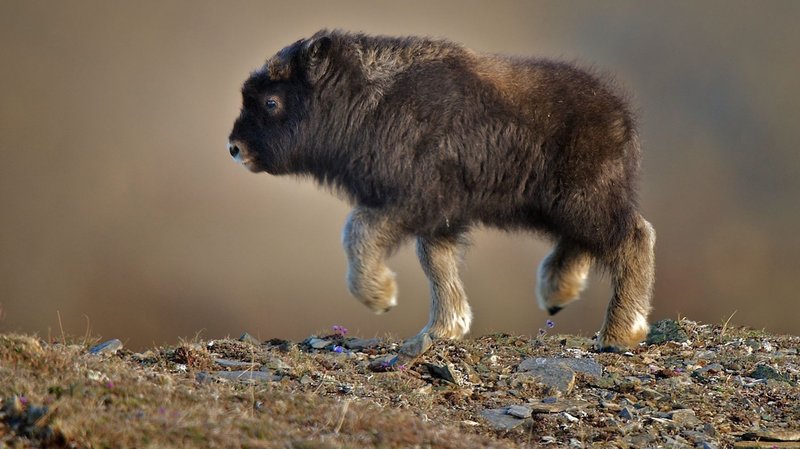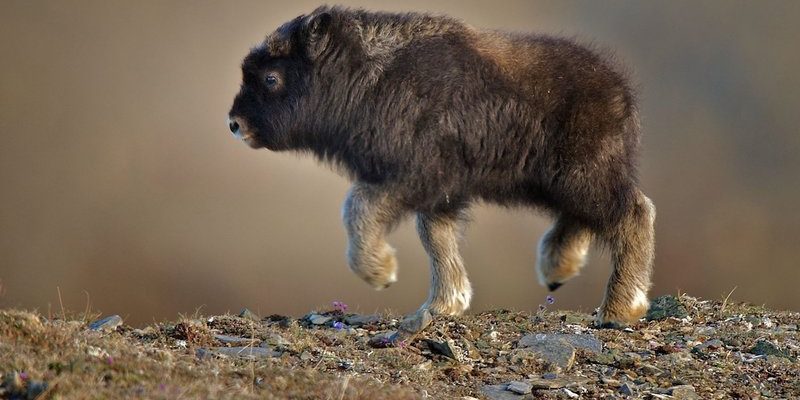
Muskoxen inhabit the frigid landscapes of the Arctic and subarctic regions, and they’ve developed unique adaptations that help them not just survive, but thrive despite the daily challenges of their harsh environments. Let’s dig into how this magnificent beast manages to call such an inhospitable place home.
Thick Fur: Nature’s Insulation
One of the first things you’ll notice about muskoxen is their incredibly thick fur. Think of it as nature’s down jacket. Their outer coat is made up of long, coarse guard hairs, which repel water and wind. Underneath this tough exterior is a soft undercoat called qiviut, which is finer than cashmere and provides unrivaled warmth.
This combination of fur acts like a thermal blanket, allowing muskoxen to retain body heat even in the most extreme temperatures. On cold winter nights, temperatures can plummet to -40 degrees Fahrenheit (-40 degrees Celsius), but muskoxen remain snug and warm. Here’s the thing: their fur is so effective that you could even say it’s a walking, breathing insulation system.
In addition to their fur, muskoxen have a unique way of dealing with snow. When the ground is blanketed in thick layers of ice and snow, they use their strong, broad hooves to dig through and uncover vegetation underneath. This means they can forage even when the conditions seem impossible, keeping their bellies full in the unlikeliest of places.
Social Behavior: Safety in Numbers
Muskoxen are social animals that often live in herds, which can range from a few individuals to over a dozen. Being part of a herd provides safety in numbers. When predators like wolves or bears lurk nearby, the herd sticks together, forming a protective circle around vulnerable members, such as calves or sick individuals. This strategy is a fascinating example of collective defense.
It’s interesting to see how the herd communicates. Muskoxen have a range of vocalizations, from grunts to bellows, which help them stay connected. This social structure not only helps protect individual members but also strengthens the bond within the group. You might be wondering, how does this help them survive? Well, when the herd works together, they’re better equipped to face the challenges of their environment.
Another intriguing aspect of their social behavior is their seasonal gatherings. During the breeding season, muskoxen come together in larger groups. Males will compete for the attention of females, often engaging in dramatic head-butting contests. This not only ensures genetic diversity but also strengthens the social structure of the herd.
Dietary Adaptations: Grazing in the Tundra
Muskoxen are herbivores, primarily grazing on grasses, mosses, and lichens. But their diet adapts with the seasons. In summer, they munch on a variety of tender greens that spring up in the thawing tundra. Come winter, though, things get tougher. The ground is often covered in snow, and food becomes scarcer.
During these months, muskoxen dig through the snow with their strong hooves to reach the edible vegetation beneath. It’s a labor-intensive process, but their persistence pays off. They can consume almost anything that grows in their arctic environment, which makes them quite versatile eaters.
You might find it fascinating that their digestive system plays a crucial role in their survival. Muskoxen have a four-chamber stomach that allows them to break down tough plant materials efficiently. This means they can extract as many nutrients as possible from sparse food sources, helping them stay healthy even when times are tough.
Physical Adaptations: Built for Survival
Muskoxen possess several physical traits that help them endure their harsh habitats. Their stocky, muscular bodies are designed to retain heat. They have shorter legs and a large, robust head, which helps them navigate through deep snow and fierce winds.
Additionally, their nostrils are uniquely structured to help them breathe easier in cold air. Instead of flaring out, they function more like a filter, warming and humidifying the air before it reaches their lungs. This adaptation is particularly crucial during the frigid winter months when every breath counts.
Let’s not forget about their sharp, curved horns. Both males and females have them, and they serve multiple purposes. Besides aiding in defense against predators, horns are also used in social interactions. Males, in particular, engage in displays of strength by clashing their horns, further establishing their rank within the herd.
Resilience Against the Elements
Muskoxen are incredibly resilient creatures. They’ve adapted to face the harsh realities of their environment with grit and determination. For example, they are known to withstand severe cold and high winds without much shelter. Instead of seeking refuge in caves or underbrush, they huddle together to keep warm, forming a living blanket.
When the weather turns particularly nasty, muskoxen exhibit a remarkable ability to dig into the snow for shelter. They can create hollows where they can rest and shield themselves from biting winds. It’s like having a built-in home wherever they go!
Their bodies are also remarkably efficient at conserving energy during harsh weather. In extreme cold, they’ll reduce their activity levels to minimize energy loss. This ability to slow down and conserve energy is a critical survival strategy, allowing them to endure long winters when food is hard to come by.
Adaptation to Changing Environments
As climate change shifts temperatures and alters landscapes, muskoxen face new challenges. Warmer temperatures can cause shifts in vegetation and increase the frequency of winter thaws that make food harder to find. Nonetheless, muskoxen are showing impressive adaptability.
Researchers are studying how these animals adjust their grazing patterns and social structures in response to changing habitats. Some studies suggest that muskoxen may migrate to new areas in search of food. This flexibility showcases their resilience and determination to survive, even in the face of environmental changes.
However, it’s important to keep in mind that while muskoxen are tough, they aren’t invincible. Conservation efforts play a vital role in ensuring these majestic creatures continue to thrive as their environment changes. Protecting their habitats and managing human impact is essential for their long-term survival.
Muskoxen are fascinating creatures that exemplify resilience in the face of extreme challenges. With their thick fur, social structures, and unique dietary habits, they demonstrate that life can flourish even in the harshest environments. These animals have adapted in remarkable ways, turning obstacles into opportunities just to survive.
As we put the spotlight on muskoxen, it’s clear they are not just survivors; they are a testament to the power of nature’s ingenuity. Their story serves as a reminder of the beauty of adaptation and the importance of preserving the delicate ecosystems they inhabit. You might say these woolly giants are not just tough; they embody the spirit of endurance against all odds.

